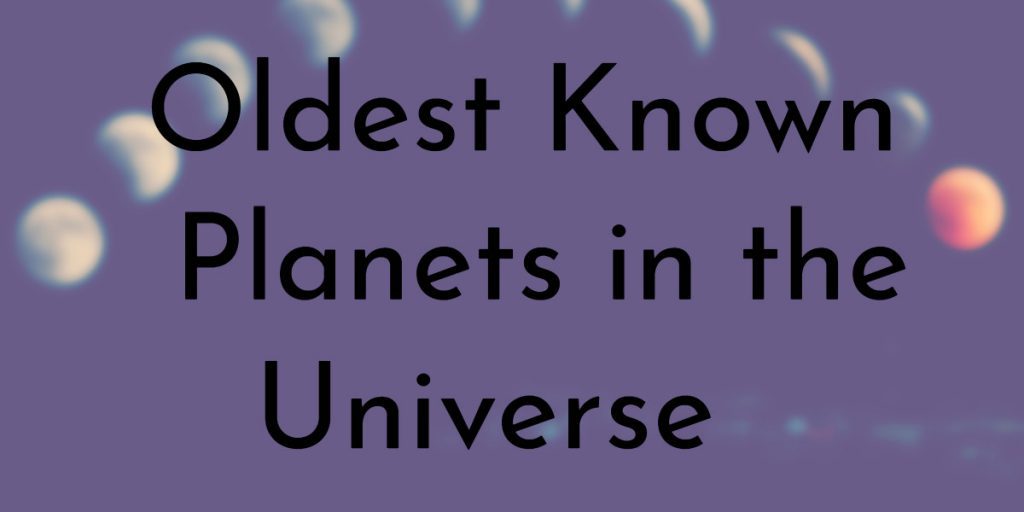Humans have been fascinated with the planets since the dawn of time, which can be seen in ancient cave paintings showing celestial bodies that we can still identify today. In our own solar system, most of the planets have always been visible to the naked eye and only the three furthest – Uranus, Neptune, and Pluto (which has been demoted from being a planet) – required strong telescopes to be discovered.
As technology has advanced, scientists and astronomers have been able to observe planets beyond our solar system, which are known as exoplanets. Through their research, we now know the age of our own solar system as well as several notable exoplanets. While our solar system may seem old at 4.6 billion years, the oldest planets discovered are twice and even three times as old as our oldest planet, which is Jupiter. Currently, there is no way to know for sure how old the planets on this list are, but their ages are based on strong scientific evidence. Scientists continue to find new planets each year and even older planets may soon be discovered.
8. Jupiter
Age: approx. 4.6 billion years – formed one million years after the Sun
Location (Solar System): Our Solar System, fifth planet from the Sun, Milky Way Galaxy
Distance from Earth: 588 million km (365.37 miles)
Planet Type: Gas giant
Date Discovered: Unknown – major moons first discovered in 1610
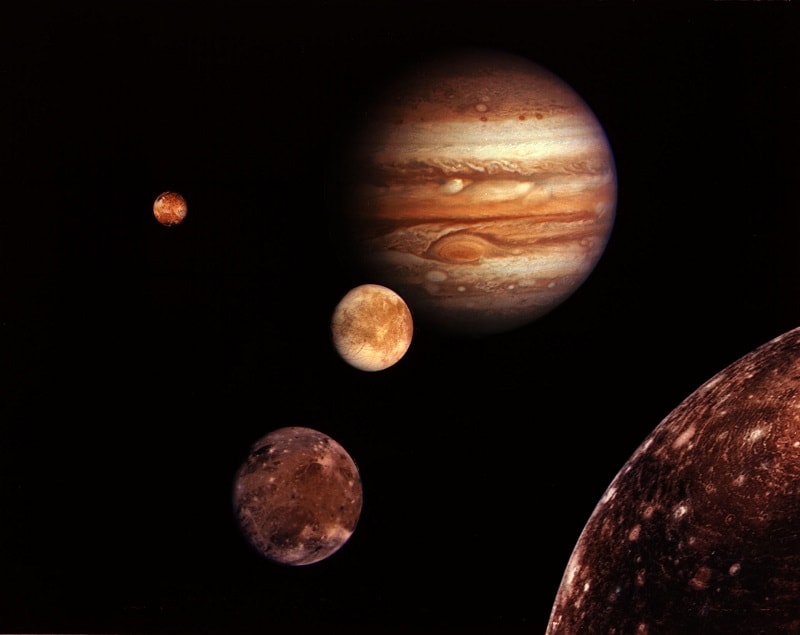
While all of the planets in our solar system are about the same age, it is widely believed that Jupiter formed first, about one million years after the Sun. Jupiter is the fifth planet from the Sun and is significantly larger than all the other planets in our solar system – it is more than twice as massive as all the other planets combined. Another thing that Jupiter is well-known for is having the most moons, with 79 moons currently confirmed.
Jupiter was first discovered in 1610 when famed astronomer Galileo first made note of the planet’s four largest moons: Io, Europa, Ganymede, and Callisto. These four moons are collectively known as the Galilean Satellites and have been well researched due to their interesting features. While they are not visible, like Saturn’s, Jupiter does have rings which surprised scientists when they were first discovered in 1979 by NASA’s Voyager 1 spacecraft.
7. TRAPPIST-1 Planets
Age: between 5.4 – 9.8 billion years
Location (Solar System): TRAPPIST-1 in the constellation Aquarius, Milky Way Galaxy
Distance from Earth: between 39 – 40 light years
Planet Type: Seven terrestrial planets
Date Discovered: Star discovered in 1999 – three planets first observed in 2015; all seven confirmed in 2017
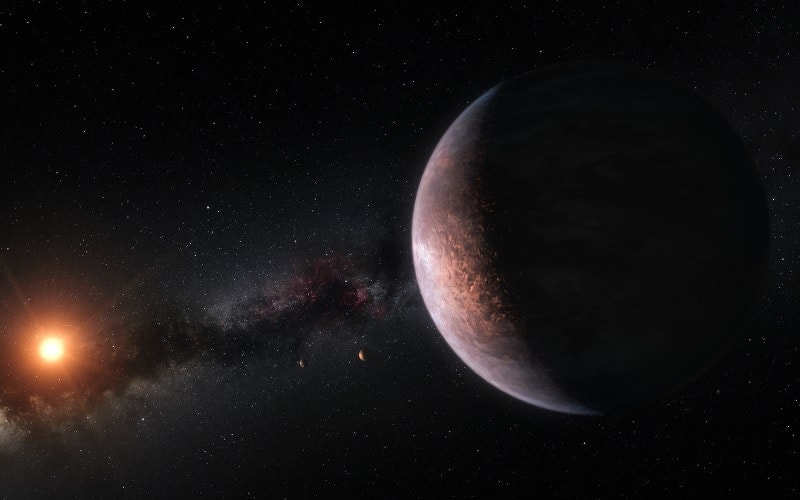
When the TRAPPIST-1 planetary system was first discovered, scientists estimated that the system was only about 500 million years old. However, a recent study released in early 2017 revealed that the planets of the TRAPPIST-1 system were between 5.4 – 9.8 billion years old, about twice the age of our solar system. The system consists of an ultra-cool red dwarf star and its seven temperate terrestrial planets, three of which are in the “habitable zone.”
The updated age of the TRAPPIST-1 system furthers the research into whether or not life can survive outside of our solar system. For now, it is unclear if any of the seven planets has conditions that can support life. Scientists will continue to observe the TRAPPIST-1 planets using NASA’s Hubble Space Telescope and the upcoming James Webb Space Telescope and hope to determine if any of the planets have a similar atmosphere to Earth.
6. Kepler-452b
Age: approx. 6 billion years
Location (Solar System): Kepler-452 in the constellation Cygnus, Milky Way Galaxy
Distance from Earth: 1,400 light years
Planet Type: Super-Earth exoplanet
Date Discovered: 2015
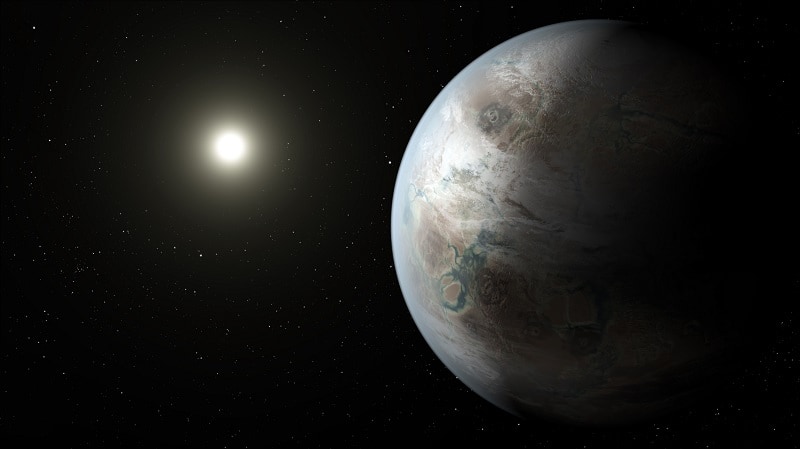
Recently discovered in 2015, the planet known as Kepler-452b has been making waves in the scientific community. The planet, which NASA also calls Coruscant, is the first Earth-like planet in the “habitable zone” of a sun-like star – this has led to Kepler-452b being dubbed Earth 2.0 or Earth’s cousin. Kepler-452b’s discovery came on the 20th anniversary of the discovery of 51 Pegasi b, which proved that other suns host planets.
Kepler-452b is 60 percent larger in diameter than Earth and is considered a super-Earth exoplanet. Further research is being conducted on the planet and its status as a planet still needs to be confirmed by independent research. At this time, it is uncertain if Kepler-452b is a rocky planet like Earth and has habitable environments.
5. 51 Pegasi b
Age: approx. 6.1 – 8.1 billion years
Location (Solar System): 51 Pegasi in the constellation Pegasus, Milky Way Galaxy
Distance from Earth: over 50 light years
Planet Type: Hot Jupiter (gas giant)
Date Discovered: 1995
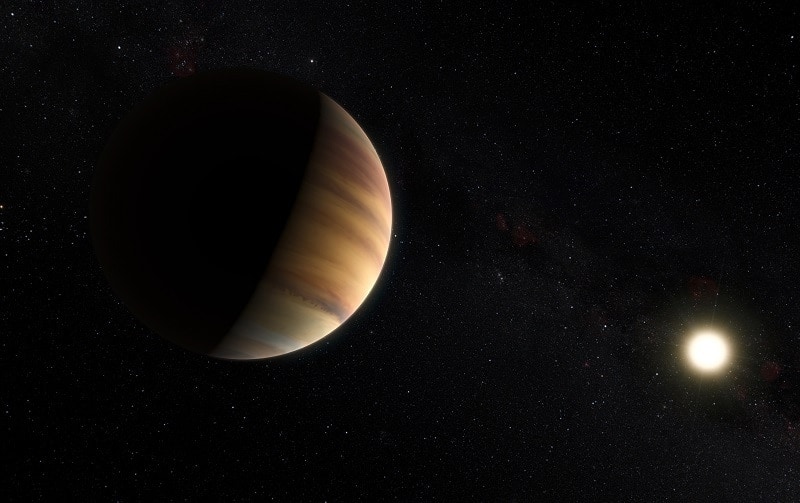
The discovery of 51 Pegasi b in 1995 was one of the most important in space exploration history, launching a whole new field in astronomical research. 51 Pegasi b was the first planet (outside of our solar system) discovered around a sun-like star. Since its discovery, 51 Pegasi b has picked two other names, Bellerophon and Dimidium. It was dubbed Bellerophon by astronomer Geoffrey Marcy, who helped confirmed its existence and wanted to follow the tradition of naming planets after Greek and Roman gods (Bellerophon was a Greek mythological figure who rode Pegasus). The International Astronomical Union named the planet Dimidium, which is later for half, in reference to the planet being half the mass of Jupiter.
Over the past two decades, scientists have extensively studied 51 Pegasi b and we now know a lot about the planet. 51 Pegasi b is very close to its sun and completes its orbit in about 4 days. It is also tidally locked to its star, only ever facing its sun from one side (just like Earth with the moon). Additionally, 51 Pegasi b was the first planet to be called a “hot Jupiter” due to its similarity to Jupiter and close proximity to its sun.
4. HD 80606 b
Age: approx. 7.6 billion years
Location (Solar System): HD 80606 in the constellation Ursa Major, Milky Way Galaxy
Distance from Earth: 190 light years
Planet Type: Hot Jupiter (gas giant)
Date Discovered: 2001
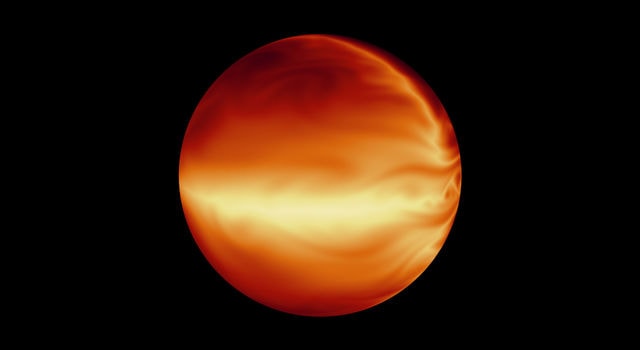
HD 80606 b is one of the most eccentric planets ever discovered – the planet is notable for having and extremely weird and extremely elongated orbit. The discovery of HD 80606 b was published in 2001 by a team led by Michael Mayor and Dider Queloz. The eccentric orbit of HD 80606 b is similar to that of a comets, the planet passes very close to its star before moving very far out from it every 111 days.
Due to its elongated orbit, one side of HD 80606 b gets dramatically hotter than the other side when it passes close to its sun. According to NASA, the side facing the sun quickly heats up to more than 2,000 degrees Fahrenheit (1,100 degrees Celcius). Scientists believe that HD 80606 b is currently in the process of migrating from its elongated orbit to a more regular one. They believe this is typical of all hot Jupiter planets, which start out with eccentric orbits and eventually settle into a more regular, circular orbit over hundreds of millions of years.
3. 55 Cancri e
Age: approx. 10.2 billion years
Location (Solar System): 55 Cancri A in the constellation Cancer, Milky Way Galaxy
Distance from Earth: 40 light years
Planet Type: Unknown for sure – believed to be a carbon planet
Date Discovered: 2004
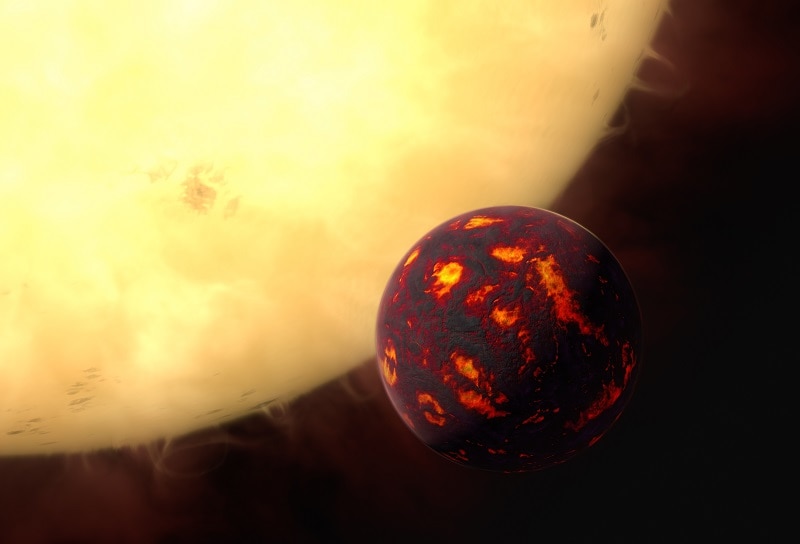
The planet known as 55 Cancri e or Janssen was first discovered by astronomers in 2004 who were observing the planet’s star 55 Cancri A. In 2012, 55 Cancri e was featured in media reports for being a “diamond planet” after a study suggested that the planet was mostly made out of carbon, primarily as diamond and graphite. However, this idea was challenged in 2013 and scientists now believe that 55 Cancri e is not as carbon-rich as the previous study suggested.
According to a 2016 study using data from NASA’s Spitzer Space Telescope, scientists believe that 55 Cancri e has lava flows on its surface. The planet is also so close to its star that 55 Cancri e has a permanent day and night side. In 2017, following deeper analysis of the Spitzer data, NASA revealed that 55 Cancri e likely has an atmosphere similar to Earth’s, but thicker.
2. Keppler-444 Planets
Age: approx. 11.2 billion years
Location (Solar System): Kepler-444 star system near the constellation Lyra, Milky Way Galaxy
Distance from Earth: 117 light years
Planet Type: Five terrestrial exoplanets
Date Discovered: First noted in 2013 – confirmed results in 2015
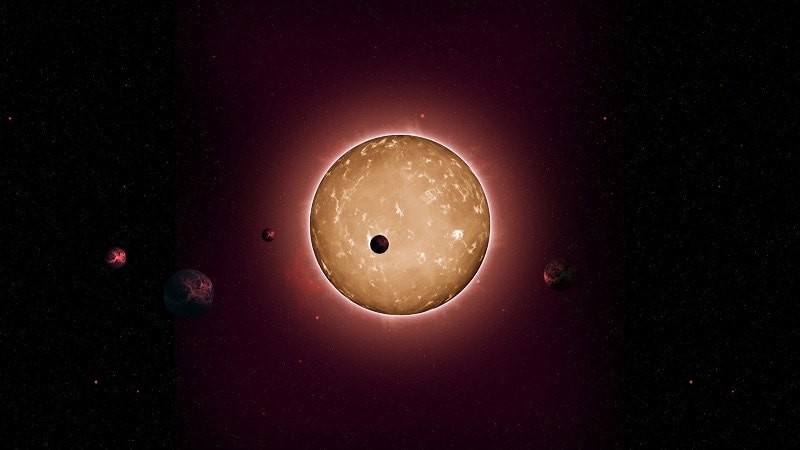
In 2015, astronomers using NASA’s Kepler mission announced that they had discovered a new planetary system that emerged about two billion years after the Milky Way first formed. The five planet system, named Kepler-444 after the system’s star, is estimated to be about 11.2 billion years old. This makes Kepler-444 the oldest known system of terrestrial-size planets.
The five rocky planets in the Kepler-444 system range in size, with the smallest similar to Mercury and the largest to Venus. All of the planets only take about ten days to orbit their sun-like star, making them all extremely hot. According to NASA, the planets’ close orbit means that the planets are too hot to have supported any life.
1. PSR B12620-26 b
Age: approx. 13 billion years
Location (Solar System): Globular star cluster M4 in constellation Scorpius, Milky Way Galaxy
Distance from Earth: 5,600 light years
Planet Type: Jovian Planet (gas giant)
Date Discovered: Star first spotted in 1987 – confirmed planet in 2003
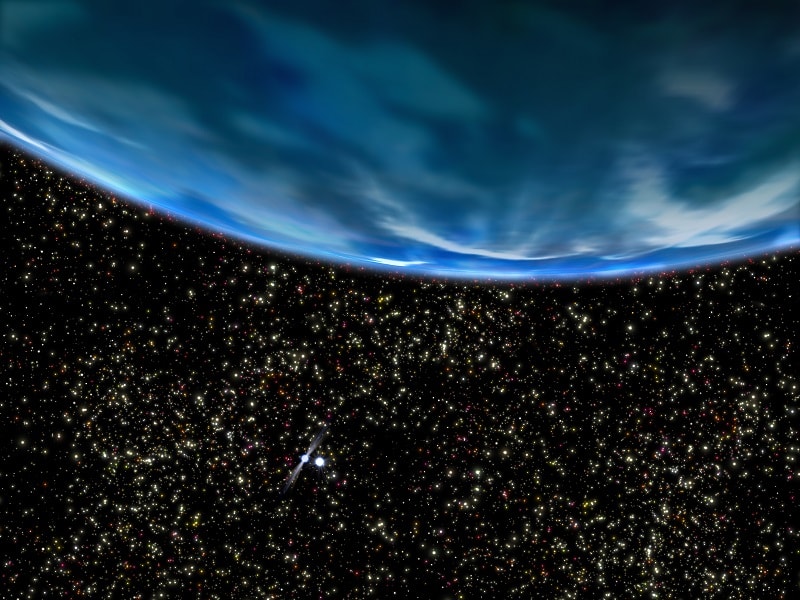
The exoplanet known as PSR B12620-26 b is the oldest known planet in the universe, with an estimated age of about 13 billion years. Scientists first discovered the pulsar star PSR B12620-26 in 1987 and for more than two decades continued to research the globular star cluster to prove that there were planets in the system. Finally, in 2003 scientists confirmed the existence of a planets with the help of the Hubble Space Telescope.
PSR B12620-26 b is described as a “hot-Jupiter” type planet but is 2.5 times larger than Jupiter. In addition to being the oldest planet ever discovered, PSR B12620-26 b is the first circumbinary planet ever confirmed – it orbits around pulsar PSR B12620-26 as well as white dwarf WD B1620-26. The planet is also the first to be discovered in a globular cluster and scientists now believe that they will find other gas-giants in different globular clusters.


